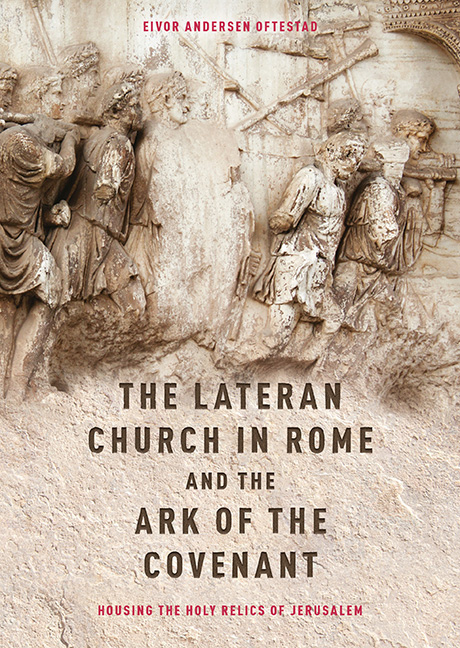 The Lateran Church in Rome and the Ark of the Covenant: Housing the Holy Relics of Jerusalem
The Lateran Church in Rome and the Ark of the Covenant: Housing the Holy Relics of Jerusalem Book contents
- Frontmatter
- Dedication
- Contents
- List of Tables
- Acknowledgements
- List of Abbreviations
- Author's Note
- Prologue
- 1 Introduction
- 2 The Description of the Lateran Church
- 3 In the Roman Context
- 4 In the Northern French Context
- 5 In the Jerusalem Context
- 6 The Temple of the New Covenant
- 7 Nikolaus Maniacutius and John the Deacon
- Epilogue
- Appendix 1 Manuscripts Transmitting the Descriptio Lateranensis Ecclesiae
- Appendix 2 Different Versions of the Descriptio Lateranensis Ecclesiae
- Appendix 3 Edition and Translation of the Descriptio Lateranensis Ecclesiae (Reg. lat. 712)
- Bibliography
- Index
- Other volumes in Studies in the History of Medieval Religion
6 - The Temple of the New Covenant
Published online by Cambridge University Press: 31 August 2019
- Frontmatter
- Dedication
- Contents
- List of Tables
- Acknowledgements
- List of Abbreviations
- Author's Note
- Prologue
- 1 Introduction
- 2 The Description of the Lateran Church
- 3 In the Roman Context
- 4 In the Northern French Context
- 5 In the Jerusalem Context
- 6 The Temple of the New Covenant
- 7 Nikolaus Maniacutius and John the Deacon
- Epilogue
- Appendix 1 Manuscripts Transmitting the Descriptio Lateranensis Ecclesiae
- Appendix 2 Different Versions of the Descriptio Lateranensis Ecclesiae
- Appendix 3 Edition and Translation of the Descriptio Lateranensis Ecclesiae (Reg. lat. 712)
- Bibliography
- Index
- Other volumes in Studies in the History of Medieval Religion
Summary
In that he saith, A new covenant, he hath made the first old. Now that which decayeth and waxeth old is ready to vanish away.
The House of God
According to the Scriptures, the temple was the house of God and characterized by two basic qualities: first, God dwelt within this house – it was the place of his throne – and, second, it was served by a hierarchically ordered priesthood set apart from the rest of the community. These qualities made the temple the exclusive meeting place between God and humanity. The priesthood functioned as mediators of God's presence and the high priest represented the summit of mediation and sacerdotal authority. Important aspects of the liturgical life at the Lateran Church were shaped according to the model of the temple but also as a superior continuation. The same can be argued for the papal private chapel – the oratory of San Lorenzo – as described by Nikolaus Maniacutius in his sermon about the image of the Saviour from about 1145.
Two questions will structure the investigation below. First, we will explore how the priesthood of the Lateran understood itself in relation to the priesthood of the Jewish temple. The starting point for this will be the ritual of Maundy Thursday as described by the Ordo of the Lateran canons by Prior Bernard (composed between 1139 and 1145). This text will be read in light of texts from the tradition of the regular canons. Secondly we will ask how, or in what way, the presence of God at the Lateran Church – and at the papal private chapel – was conceived as surpassing the presence of God at the temple. The answer, provided in this chapter and developed in Chapter 7, will be based on the sources of the dedication feast, Maniacutius’ sermon and John the Deacon's extended version of the Descriptio (1159–1181), which also summarizes an increased emphasis on the temple objects.
The sources of Chapters 6 and 7 are dated several decades after the first version of the Descriptio, all from around the mid-twelfth century. They provide a glimpse of insider perspectives on the Lateran liturgy and an understanding of the reception history of the Descriptio. The aim of the chapters is thus to analyse the promotion of the basilica according to the concept of translatio templi.
- Type
- Chapter
- Information
- The Lateran Church in Rome and the Ark of the Covenant: Housing the Holy Relics of JerusalemWith an Edition and Translation of the Descriptio Lateranensis Ecclesiae (Bav Reg. Lat. 712), pp. 121 - 156Publisher: Boydell & BrewerPrint publication year: 2019


